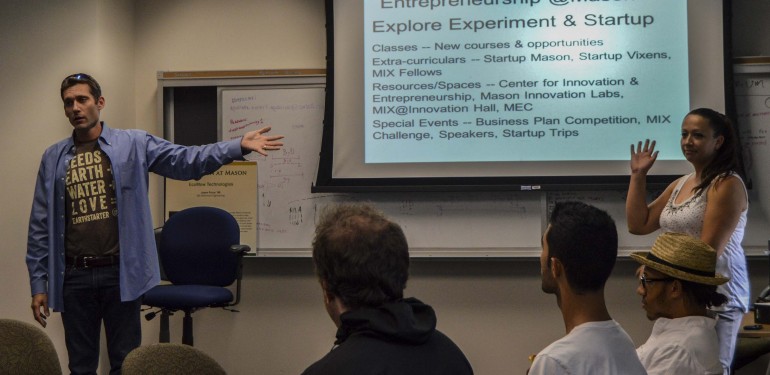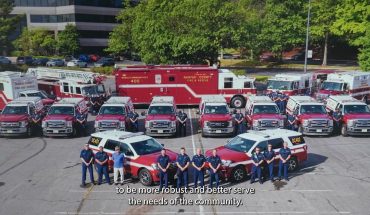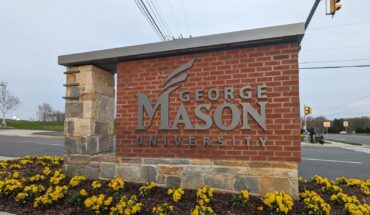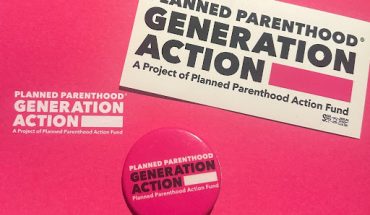(Photo credit: Alya Nowilaty/Fourth Estate)
Over the past five years or so, Mason Career Services has changed the way it helps students find jobs after graduation, and the change is working.
Christine Cruzvergara, Director of University Career Services, said the department has been changing to “an industry-focused, customized-connector model.” Generally, this means the focus has shifted from majors to what the industry wants. Before, career services staff helped students find jobs based off of chosen majors.
The industry-focused model is now necessary, Cruzvergara said, because employers no longer are concerned with students’ majors, but want to see industry knowledge and broader capabilities.
“Our employers don’t care what you majored in,” she said. “They want to know that you understand their industry. Can you talk shop? If you want to go into healthcare, can you talk about the issues that are happening in healthcare right now and how you’ll use whatever your background is to contribute to the work and their organization?”
Cruzvergara was hired in 2011 and has since seen an increase in the career outcomes rate of Mason graduates. The career outcomes rate is “all students with a post-graduation plan,” which includes employment, graduate school, military or volunteer work. The rate is determined by an annual survey Career Services sends out to recent graduates.
In 2010, the career outcomes rate was 66 percent. In 2014, it was 74 percent. That means 74 percent of graduates from the Class of 2014 “have solidified their plan,” Cruzvergara said. In other words, those graduates are employed or have begun another full-time occupation, like the military or graduate school. Survey respondents who said they were not currently seeking employment are not included in the rates.
Undergraduate students of the Class of 2014 had a career outcomes rate of 68 percent — lower than the graduate students’ rate of 83 percent. Out of those undergraduates, 50 percent reported employment; 32.1 percent reported that they were seeking employment; and the rest said they had begun graduate school, volunteer work or the military. 77.3 percent of graduate students reported employment.
The increase in the careers outcome rate occurred at the same time that a shift was happening within Career Services.
“I came in the summer of 2011 with the charge to really re-envision what Career Services could look like for Mason and have been able to really overhaul all our services,” Cruzvergara said.
That overhaul led to the implementation of the industry-focused, customized-connecter model.
“It really comes down to two major areas,” Cruzvergara said. “We wanted to prepare students better, and we wanted to connect them better to opportunities, to employers, and how we did that was we moved to an industry-focused model.”
The new model is less focused on finding students careers that fit specifically with their majors.
“We at Mason are really big about helping our students think more broadly about what they can do with their major and recognizing [that] in the 21st century jobs are really not about major equals career,” Cruzvergara said.
One of the biggest changes was a three-team initiative designed to support students during every stage of the career search. The Career Counseling team helps students find areas of interest; Industry Advisors help students break into a particular field; and the Professional Development team teaches job skills from email etiquette to conflict management — “those types of things that nobody ever really teaches you, but you’re sort of expected to know how to do when you get into the workplace,” Cruzvergara said.
She said Mason is ahead of the curve when it comes to this shift in career services.
“Not all career centers are shifting and doing things differently,” Cruzvergara said. “But I think the ones that are are the ones that are really helping to serve their students better.”
Mason has been recognized for leading this shift by setting an example for other career services departments to follow.
In 2013, Cruzvergara received the National Association of Colleges and Employers Rising Star Award. In 2015, she received the Innovation Award from the American College Personnel Association.
Last October, Cruzvergara hosted a webinar for the Fullbridge Program called “Innovations in College-to-Career.” Fullbridge invited viewers to hear Cruzvergara explain how Mason “is tackling the college-to-career crisis” through the “new ‘customized connector’ model and the critical elements in leading this change effort.” Cruzvergara said approximately 350 institutions watched the webinar and that she received many follow-up phone calls and emails with requests for more assistance in converting to the new model.
“I’ve lost track of the number of institutions that have called to say, ‘Tell us about your model, tell us how you led this change,’” Cruzvergara said.
She said this shift among career services departments was precipitated by the recession in 2008. The Chronicle of Higher Education agreed. A report released this past summer, “The Value Equation: Measuring & Communicating the Return on Investment of a College Degree,” said, “Ever since the recession of 2008, colleges have been under pressure from students, parents, and lawmakers to better prove their value in the face of increasing tuition prices.”
Unveiled Saturday, College Scorecard is a new federal government website that offers easy-to-read statistics of all colleges and universities that enroll students who receive federal financial aid. The data on the website is based off of students who have received or are receiving any kind of federal aid. Viewers can find the average annual cost of attending, graduation rate, and average student loan debt of graduates, among other statistics.
According to College Scorecard, the median salary of Mason alumni 10 years after graduation is $57,000, which is higher than the national average of $34,343. That number for the University of Virginia is $58,600; for Virginia Tech it’s $57,900; for Virginia Commonwealth University it’s $41,800.
Cruzvergara said there are many reasons Mason delivers a solid return on investment.
“I would certainly never say it’s just because of Career Services that we have a really great return on investment,” Cruzvergara said. “I think it’s a number of factors.”
Some of the other factors she listed were Mason’s commitment to accessibility, its Northern Virginia location and hands-on learning experience.
“I also think that Mason as institution is about hands-on learning,” Cruzvergara said. “I think everything that you’re getting in the classroom from your faculty is helping to prepare you for the practicalities of life … I think this is a theory-to-practice kind of environment.”
Cruzvergara also said there is something special about Mason students that leads to success in the workforce.
“I also think the population of our students [is a factor],” she said. “I think Mason students are uniquely not-entitled and hard workers and just have a really amazing work ethic that our employers have noticed.”
Correction: This article originally said the 2014 career outcomes rate of 74 percent “does not necessarily mean that 74 percent of graduates have jobs.” This was incorrect; the career outcomes rate represents graduates who reported employment or another full-time occupation. The current article reflects these changes.




